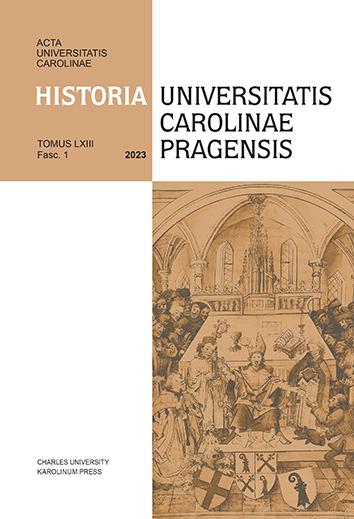University Attendance and the Development of a Correspondence Network: The Case of Basel, ca. 1500–1550
University Attendance and the Development of a Correspondence Network: The Case of Basel, ca. 1500–1550
Author(s): Amy Nelson BurnettSubject(s): Social Sciences, Education, History of Education
Published by: Univerzita Karlova v Praze, Nakladatelství Karolinum
Keywords: Basel; university; matriculation; prosopography; social network
Summary/Abstract: This essay presents a prosopographical analysis of the social network revealed by the surviving correspondence of two dozen humanists and reformers in southern Germany and Switzerland between 1510 and 1555. Over half of the members of this correspondence network obtained a master’s degree or higher, placing them among Germany’s learned elite. As students, these men formed connections with future colleagues, employers, and patrons, and so their decisions about where to study were significant. The largest number of future network members matriculated in Basel’s university, although it was the smallest university in German-speaking Europe. Many Basel students also studied at one of the other universities in southern Germany or continued their studies in France or Italy. Basel’s small size and the mobility of its students were two factors that encouraged network formation. The university of Basel attracted students through the early sixteenth century, but it was particularly important for the generation born after 1510 as one of the few places where Protestants could obtain a degree. Basel’s influence was largely limited to south Germany and Switzerland, but it played a role in shaping the learned elite of this region that was analogous to that of Wittenberg in central and northern Germany.
Journal: Acta Universitatis Carolinae Historia Universitatis Carolinae Pragensis
- Issue Year: 63/2023
- Issue No: 1
- Page Range: 175-185
- Page Count: 11
- Language: English

